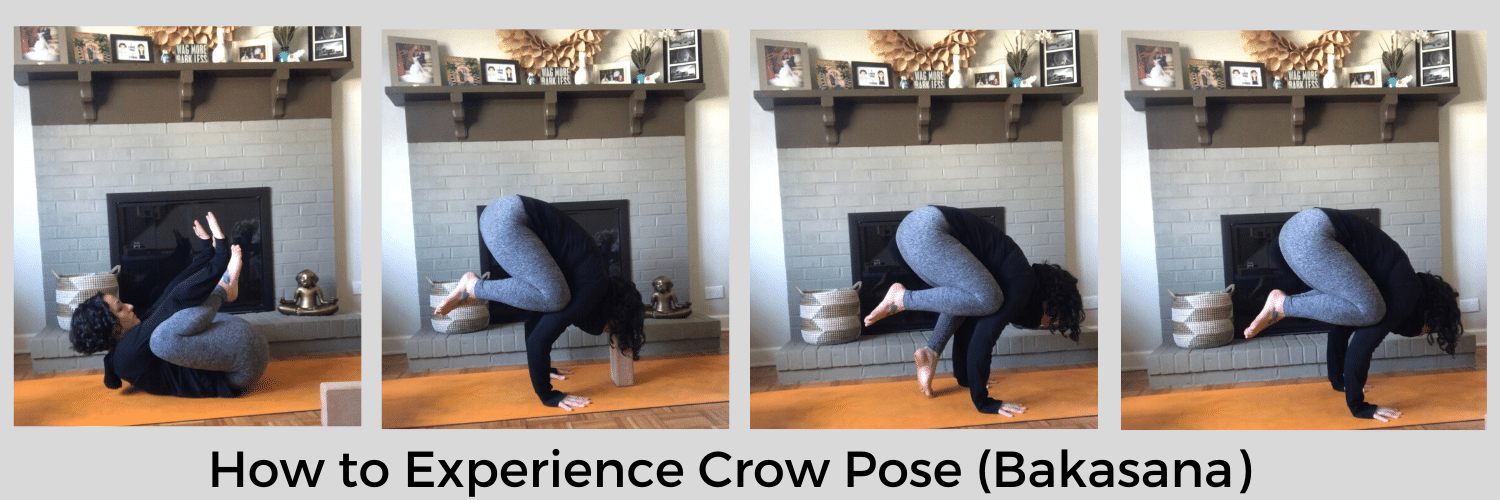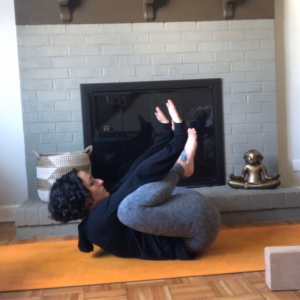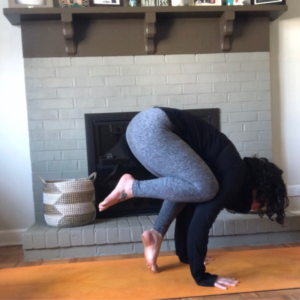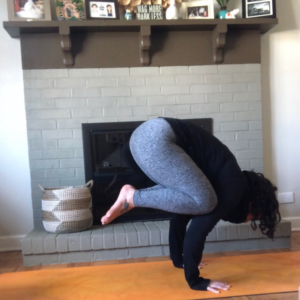
Crow pose, or bakasana, is a strength pose, balance pose, and a major confidence booster. People who don’t practice yoga or who are newer to the experience are always mystified by arm balancing. Often people repeat to themselves, “I’ll never be able to do that,” like it’s their mantra.
However, if we baby step into these postures and slowly convince ourselves that it is possible, one day it might be your next party trick. Arm balancing, in so many ways, is merely a balance trick. Arm and core strength are required and hip flexibility is a must, but with regular, mindful practice, all of this is attainable. If we embrace the idea that very rarely do we get something right the first time and we give ourselves time and space to get there – it might just happen.
The Foundation of Crow Pose
Before attempting any postures, ask yourself what is the foundation of the pose? In crow pose it is your hands. Whenever your hands are on the mat, create a strong grip and foundation to help boost your confidence and understanding for when you are attempting other poses. Remember to spread the fingers wide, point the index fingers straight to the top of the mat and press down firmly into the second knuckle and thumb knuckle. Press down into the pads of the fingertips to create a clawing action in the hands.
 Start Small
Start Small
Begin by starting small. Get a feel for the pose, the alignment, and what parts of the body are used to create the muscle memory to find this posture. Starting on your back bring your knees into your chest. The inner edges of your feet touch as the knees come widely apart (while tucking them up towards your armpits). Lift your chest off the ground to bring your arms between your legs and press your inner thighs into the outer parts of your arms (above the elbow is best). Lastly, flip your fingertips up to point at the ceiling and spread your fingers wide. Voila! Crow on your back. Pay special attention to the engagement of the core and activation of the head of the shoulders and the shoulder blades on the back. Repeat this 3-5 times regularly to start building muscle memory and core strength.
 Use a Prop
Use a Prop
Next, grab a block and set it to the tallest setting. Resist the urge to lower the block down. The goal of this pose is to lift yourself away from the floor, not go closer to the floor. First, remember to start with the foundation! From a squat position about a foot or two away from the block, practice setting the hands on your mat shoulders distance apart. Spread the fingers wide, press into the finger pads and claw the mat. Draw your shoulders away from the ears and keep them there! Now keep the hands where they are, lift your hips, bring your feet together and set your inner thighs to your outer arms above the elbows. Set your forehead to the block. Notice how your body shifted forward, your shoulders lined up over your elbows, and you are now on your tiptoes. Just like in crow on your back, press your thighs to the arms and arms to the thighs. Keep your hands active and core in tight. Now play with lifting a foot and then the other. Squeeze the belly in and pull your feet up to your buttocks together.
 Learn to Fly
Learn to Fly
As the shape becomes more familiar and comfortable take the block away. Don’t try to lift both feet up at once, but rather lift one at a time. Now that the block is removed keep your gaze forward towards the top of your mat to keep yourself lifted away from the floor. Start playing with the hands on the mat, how to position the legs, and the overall structure of the pose. Notice how you can shift your weight forward and back on the hands. Try lifting one foot, then the next, then both.
 So often we only feel successful if we are in the ideal image of a posture. Personally, I believe the journey is much more enjoyable than the destination. As you start this arm balance journey, remember you can do the pose in so many ways without ever having to lift your feet. Once the parts of the pose come together and you become confident and sure of yourself you might one day find both feet up and you are balancing successfully on your arms. Until then, repeat to yourself these inspirational words from Martin Luther King Jr.: “If you can’t fly then run, if you can’t run then walk, if you can’t walk then crawl, but whatever you do you have to keep moving forward.”
So often we only feel successful if we are in the ideal image of a posture. Personally, I believe the journey is much more enjoyable than the destination. As you start this arm balance journey, remember you can do the pose in so many ways without ever having to lift your feet. Once the parts of the pose come together and you become confident and sure of yourself you might one day find both feet up and you are balancing successfully on your arms. Until then, repeat to yourself these inspirational words from Martin Luther King Jr.: “If you can’t fly then run, if you can’t run then walk, if you can’t walk then crawl, but whatever you do you have to keep moving forward.”
